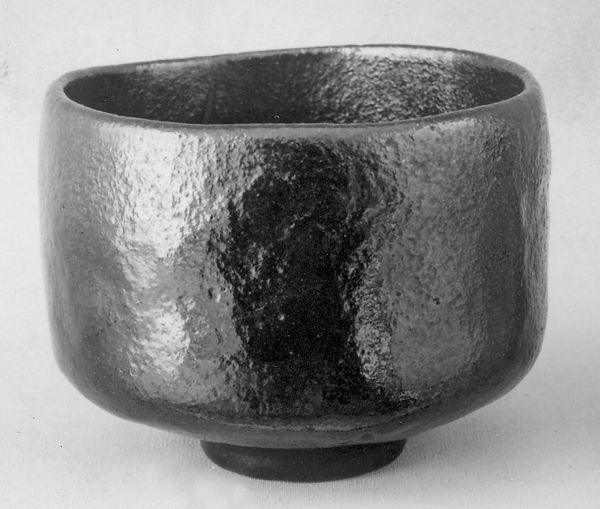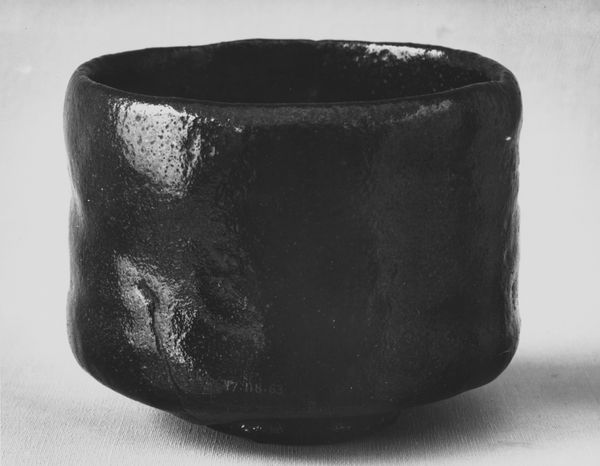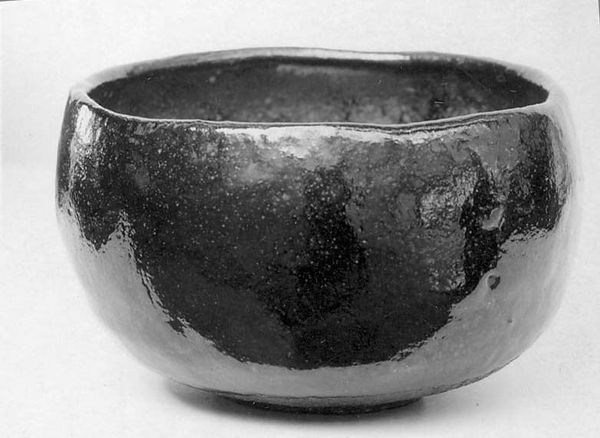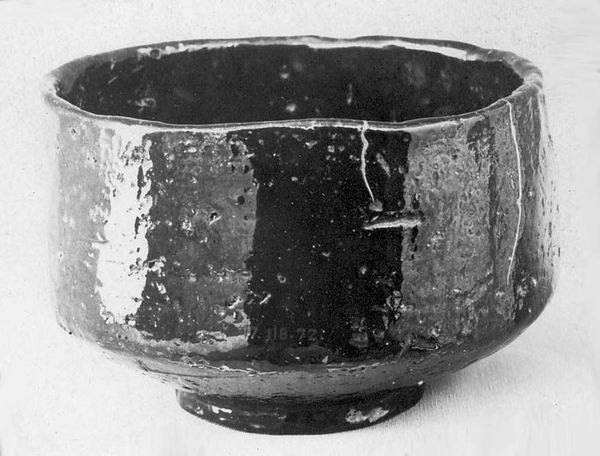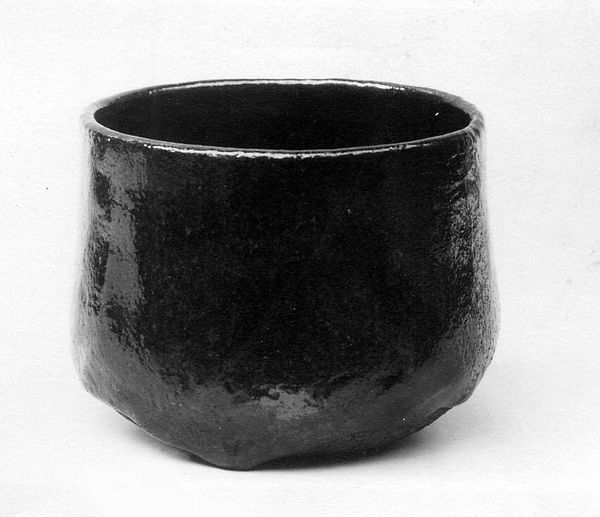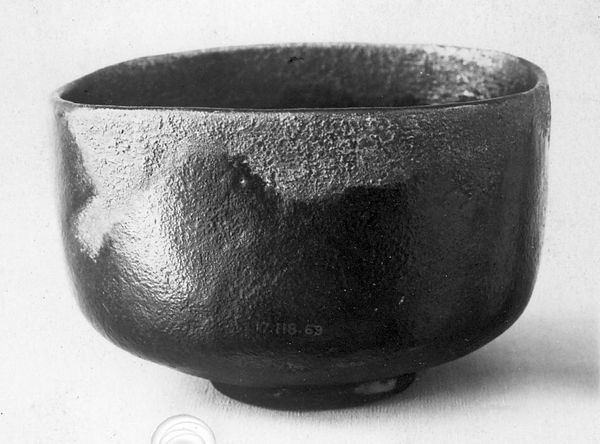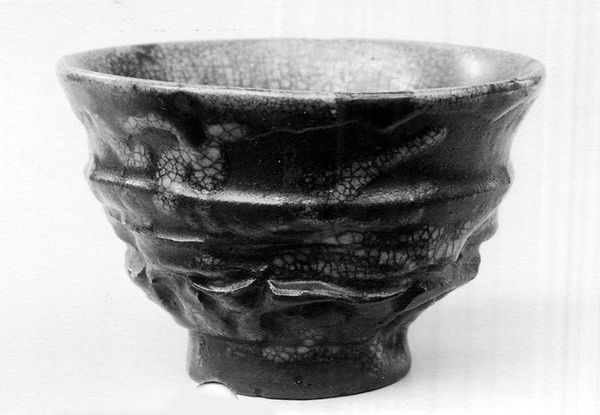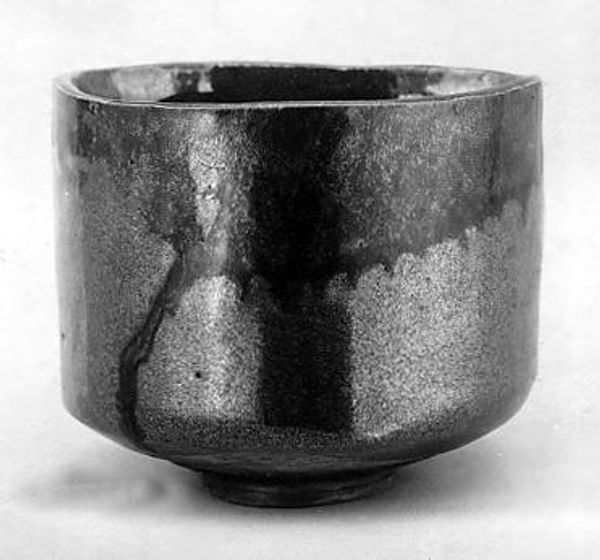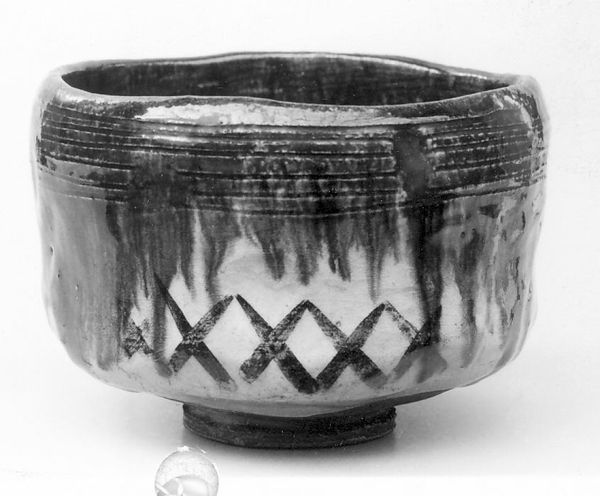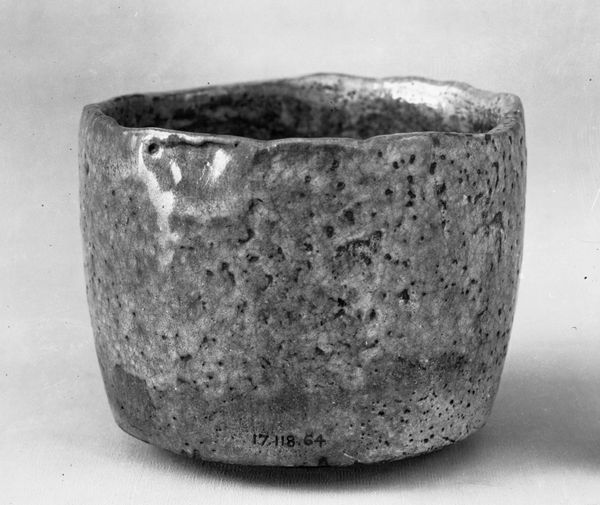
ceramic, earthenware
#
asian-art
#
ceramic
#
earthenware
#
stoneware
#
24_meiji-period-1868-1912
Dimensions: H. 4 in. (10.2 cm); Diam. 4 3/8 in. (11.1 cm)
Copyright: Public Domain
Editor: This is a Japanese teabowl by Keinyu, made with ceramic earthenware during the Meiji Period, so sometime between 1860 and 1880. It’s currently housed at the Metropolitan Museum of Art. The dark glaze gives it a somber, weighty feel. What's your take on this piece? Curator: It's more than just a somber teabowl, isn’t it? Consider the Meiji Period, a time of rapid modernization and Westernization in Japan. Doesn’t this bowl, with its imperfections and handcrafted quality, almost act as a subtle form of resistance? A quiet acknowledgement of what’s lost in that transition? Editor: Resistance? That's interesting. I wouldn't have seen it that way initially. Curator: Think about the historical context. During the Meiji period, Japan opened its doors to foreign influence, disrupting traditional crafts. Everyday objects like this teabowl become powerful symbols. Its rough, imperfect surface embodies wabi-sabi philosophy – a celebration of transience and imperfection. Wouldn’t you say this stands in stark contrast to the mass-produced goods that started flooding the market? Editor: I see what you mean. So it’s like a statement through its form, advocating for traditional values? Curator: Exactly. And that statement isn't just aesthetic; it's political, social, even spiritual. The bowl encourages us to reconsider the values of industrialization and globalization that often overshadow quieter, more intimate forms of cultural expression. Editor: That changes my perception of the object. I had focused on the immediate impression of darkness. Curator: It's amazing how much history can be contained within a single object. Editor: Absolutely, I’ll definitely view ceramics differently now!
Comments
No comments
Be the first to comment and join the conversation on the ultimate creative platform.
